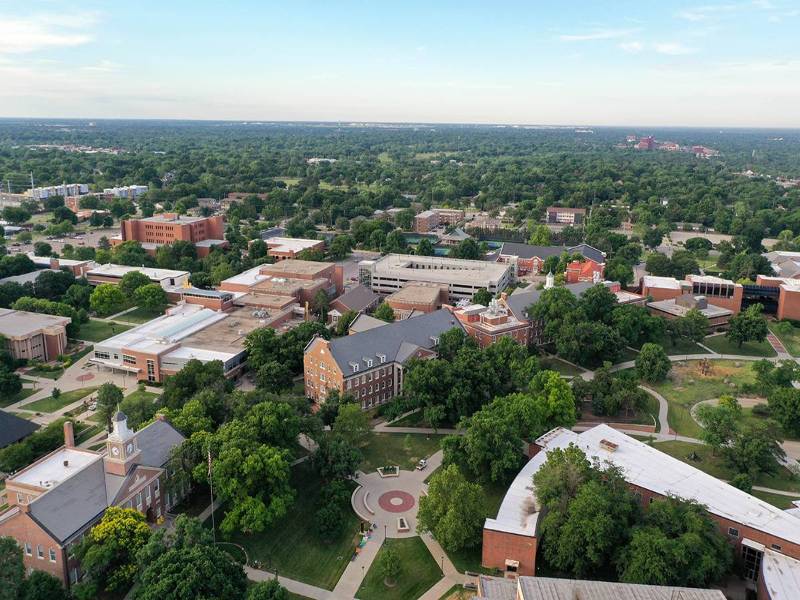
Wichita State University's Center for Economic Development and Business Research has released an updated employment forecast for Wichita, Kansas City, Topeka and the state of Kansas.
Kansas forecast
According to the Bureau of Economic Analysis, the U.S. economy grew by 5.7% in 2021
after contracting 3.7% the prior year. The first half of 2022 registered two consecutive
quarters of negative real GDP growth, prompting some reporters to declare a recession.
Those declarations, however, might be premature. It is important to note that the
National Bureau of Economic Research is the official entity to call a recession, which
is always retroactive and includes other variables beyond GDP. Currently, there are
mixed signals about the broader economic conditions. Market volatility, inflation,
the housing market and negative consumer sentiment contributed to economic pessimism.
Alternatively, gross domestic income, employment, and retail sales have remained robust
and appear to be a proverbial firewall to a recession.
In 2021, Kansas' employment grew by 1.1%, adding over 14,700 jobs. In the center's
more optimistic outlook, employment growth is projected to add 10,107 new jobs at
a gain of 0.7% in 2022. The slowing growth expectations are because of the tightened
monetary policy and the labor market approaching full employment. Because of the potential
market correction, the center has a lower bound forecast for the state of 0.0% in
2023 and 0.9% in 2024.
Wichita forecast
Average annual employment in the Wichita metropolitan area increased by 4,917 workers in 2021, a growth of 1.7%. The global pandemic’s impact on the economy decreased jobs by 39,700 in April 2020. Since then, the region has added back 36,300 workers. In 2022, year-over-year growth was over 2% for the first two quarters, which is above the historical average growth rate.
The Wichita area recovery is expected to moderate the remainder of the year and into
2023, as both tightening monetary policy and labor conditions will dampen the outlook.
Although global and national market conditions are slowing, the Wichita metropolitan
area is expected to have one of the strongest growths within the state, adding 3,185
jobs at an annualized increase of 1.1%. Even the lower bound growth of 0.3% remains
more robust than the flat growth at the state level and declining expectations in
some of the other markets.
The Wichita metropolitan area consists of Sedgwick, Butler, Harvey and Sumner counties.
Kansas City
Total employment in the Kansas City, Kansas metropolitan area increased by just shy of 5,900 workers in 2021, a growth of 1.3%. The global pandemic’s impact on the economy decreased jobs by 51,000 jobs in April of 2020. Since then, the region has added back 54,300 workers. In 2022, the first two quarters had 2.2 and 1.9% annualized growth, representing a stronger growth year for the area.
The economy is forecast to increase by 1.1%, adding over 5,100 workers, which is a
moderating growth rate due to the labor market approaching full employment and the
tightening monetary policy. Although global and national market conditions are slowing,
the Kansas City area is expected to have one of the strongest growths within the state.
The lower bound growth rate for the Kansas City area is 0.3%, which remains stronger
than the flat growth at the state level and the declining expectations in some of
the other markets.
The Kansas City, Kansas metropolitan area portion includes Johnson, Leavenworth, Linn,
Miami and Wyandotte Counties.
See the full Kansas City forecast
Topeka
The Topeka metropolitan area’s employment grew by 1,317 employees in 2021, an expansion
of 1.2%. The global pandemic’s impact on the economy decreased jobs by just under
9,900 in April 2020. Since then, the region has added back just under 9,100 workers.
In 2022, year-over-year growth was over -0.2% for each of the first two quarters,
which was counter to the broader macro trends.
Although the Topeka area declined in the first part of the year, the forecast is for
the second half to pick up, creating a 0.3% annual growth rate. With the global and
national headwinds, the forecasted employment growth for 2023 is expected to be between
-0.5% to 0.2%. The more optimistic view holds a tightening monetary policy environment
and slow growth. The negative growth factors in more global pressures, causing a dip
in the national economy between 2022 and 2023.
The Topeka metropolitan area consists of Jackson, Jefferson, Osage, Shawnee and Wabaunsee
counties.

